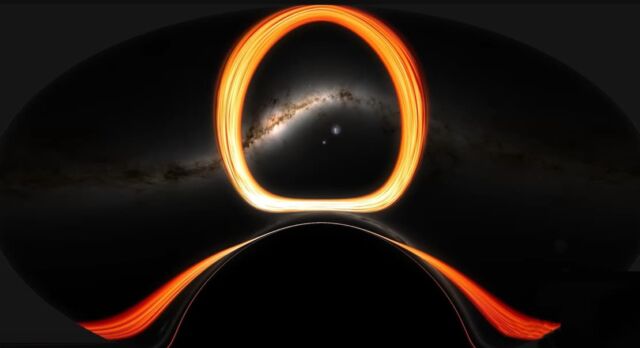 NASA
NASA
A new immersive visualization made by NASA’s supercomputer shows what happens when a camera, pretending to be an adventurous astronaut, gets too close to a supermassive black hole.
This black hole is a giant, 4.3 million times heavier than our Sun, just like the one in the middle of our Milky Way. Scientists at Goddard made this video using the Discover supercomputer. They kept things simple by imagining it as not spinning.
As the camera falls, it sees a flat, swirling cloud of hot gas called an accretion disk around the black hole. There are also glowing rings of light called photon rings, formed by light that’s circled the black hole one or more times. And in the background, you’ve got the starry sky we see from Earth.
Making this video took a lot of computing power, about 10 terabytes of data, like half of everything in the Library of Congress. But it only took five days to run on a tiny fraction of Discover’s processors—just 0.3%. Doing the same thing on a regular laptop would take over ten years!
source NASA





Leave A Comment